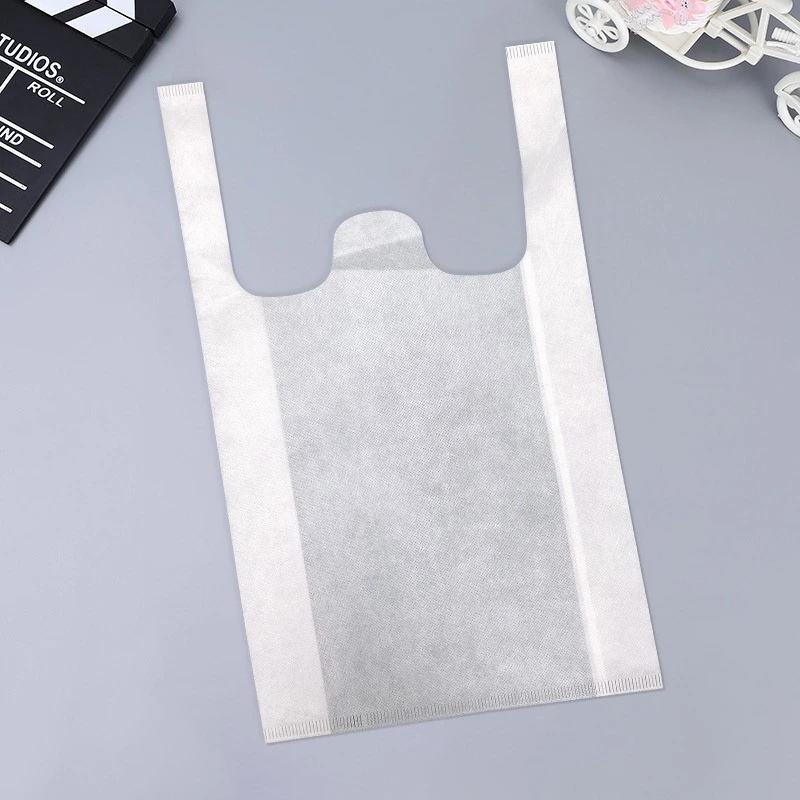Non-woven Bag Knowledge
With the restriction on plastic bags, Non-woven Shopping Bag is becoming more and more popular, and people are gradually deepening their understanding of non-woven bags. Material of non-woven bags: The main material of non-woven bags is non-woven fabric. Non-woven fabric is a kind of non-woven fabric, which directly uses polymer slices, short fibers or filaments through various fiber web forming methods and consolidation technologies to form a new type of fiber product with soft, breathable and planar structure. It has the characteristics of short process flow, high output, low cost, fast variety change, and wide source of raw materials. Advantages of non-woven bags: Non-woven bags are cheap and good, environmentally friendly and practical, widely used, with prominent advertising positions, suitable for various business activities and exhibitions and trade fairs, and are ideal advertising promotion gifts for enterprises and institutions. Classification of non-woven bags Non-woven bags can be divided into:
1. Spunlace non-woven bags: It is to spray high-pressure fine water flow onto one or more layers of fiber webs to entangle the fibers with each other, so that the fiber web can be reinforced and have a certain strength.
2. Heat-bonded non-woven bag: refers to adding fibrous or powdery hot-melt bonding reinforcement materials to the fiber web, and the fiber web is then heated, melted, cooled and reinforced into cloth.
3. Pulp air-laid net
Non-woven bag: also known as dust-free paper and dry papermaking non-woven fabric. It uses air-laid technology to loosen the wood pulp fiberboard into a single fiber state, and then uses air-laid method to make the fiber agglomerate on the net curtain, and the fiber web is then reinforced into cloth.
4. Wet-laid non-woven bag: It is to loosen the fiber raw materials placed in the water medium into single fibers, and at the same time, mix different fiber raw materials to make fiber suspension slurry, which is transported to the web-forming mechanism. The fibers are formed into a net in a wet state and then reinforced into cloth.
5. Spunbond non-woven bag: After the polymer has been extruded and stretched to form continuous filaments, the filaments are laid into a net, and the fiber web is then self-bonded, thermally bonded, chemically bonded or mechanically reinforced to make the fiber web into a non-woven fabric.
6. Meltblown non-woven bag: Its process: polymer feeding---melt extrusion---fiber formation---fiber cooling---netting---reinforcement into cloth.
7. Needle-punched non-woven bag: It is a kind of dry non-woven fabric. Needle-punched non-woven fabric uses the puncture effect of needles to reinforce the fluffy fiber net into cloth.
8. Stitched non-woven bag: It is a kind of dry non-woven fabric. The stitching method uses the warp knitting coil structure to reinforce the fiber net, yarn layer, non-woven material (such as plastic sheet, plastic thin metal foil, etc.) or their combination to make non-woven fabric. Uses of non-woven fabrics: Because non-woven fabrics have many excellent functional properties and are extremely widely used, they can be divided into the following categories according to their uses:
1. Non-woven fabrics for clothing;
2. Non-woven fabrics for leather and shoemaking;
3. Non-woven fabrics for home decoration and home furnishing;
4. Non-woven fabrics for medical and health care;
5. Non-woven fabrics for filter materials;
6. Non-woven fabrics for industrial use;
7. Non-woven fabrics for the automotive industry;
8. Non-woven fabrics for packaging;
9. Non-woven fabrics for agriculture and horticulture;
10. Non-woven fabrics for military and defense industries;
11. Non-woven fabrics for other industries
